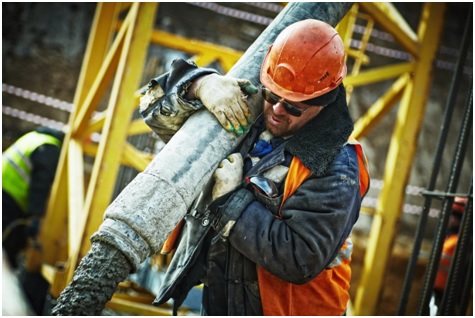Construction work is one of the deadliest professions in the world. According to the U.S. Bureau of Labor Statistics, 1,061 of the 5,333 people who died from work-related injuries in 2019 were construction workers, the greatest number of deaths in the sector since 2007.
Therefore, construction organizations must prioritize workplace safety because their employees frequently encounter numerous risks. However, despite such safety measures, construction workers regularly run the risk of electrocution, being struck by a piece of machinery or heavy object, and slipping and falling.


These dangers are something not every person can bear. In fact, A list of twenty-five riskiest jobs in the U.S. was recently published by business insurance analysis firm Advisor Smith, and twelve of those professions were from the construction industry.
With that in mind, the following are the seven most dangerous jobs in the construction industry.
1. Demolition Workers
Demolition is just as hazardous as construction since workers toil on unfinished sites at great heights and close to unstable buildings. Furthermore, they must also work with powerful tools to knock down barriers and explosives in some specialized situations.
In addition to the immediate danger posed by falling debris, demolition workers risk developing occupational illnesses. Workers who demolish historic buildings may be exposed to excessive dust and asbestos, which can result in severe lung conditions.
However, contractors know about this and are doing their best to keep their workers safe and sound. For instance, they know about the prevalent risk of asbestos exposure and partner with multiple third-party asbestos removal companies. These companies remove the asbestos from insulation beforehand, allowing demolition crews to work in an asbestos-free environment.
Drone Services involve the use of unmanned aerial vehicles equipped with advanced technology to inspect, measure, and analyze sites for construction, agriculture, or any other purpose. It saves time, reduces risk, and provides high-resolution imagery.
2. Cement Masons
Masons finish stonework, typically using power tools or lifting cement blocks for hours at a time, then place them maintaining uniformity. It is physically demanding to work with big objects, especially over the length of a multi-decade career in masonry.
For these individuals, overexertion is a severe problem, and exhaustion or injury could lead to slip and fall incidents or even fatalities. But with technology, mason workers are now safer than ever. Some companies have made exoskeleton suits that masons can wear to enhance strength.
This suit is typically worn like a safety vest and provides around fifteen pounds of lift per arm. This reduces physical strain when lifting heavy materials and operating equipment during mason work.
3. Mining Equipment Operators
When it comes to hazardous construction work, mining is in a league of its own, with equipment operators facing a constant onslaught of possible dangers. Miners typically operate heavy machinery to dig and bore into the earth’s surface. Moreover, working underground also has its own set of hazards.
However, to ensure that workers don’t succumb to such hazards, it’s best to avoid them entirely with the help of technology. Here, autonomous mining machinery that can be operated remotely is utilized. In fact, such technology even enables workers to control numerous types of heavy machines simultaneously.
Moreover, these remote machines can also help obtain crucial data that helps drive strategic decision-making without ever being underground.
4. Crane Operators
It takes precision to operate a crane safely, especially in an urban area with little room for human error. Crane operators work in various hazardous environments, from raising heavy shipping containers at shipyards to moving tons of construction materials to a higher story of a structure under construction.
So, to ensure safety, equipment operators must receive extensive training in safe machine usage. Site designers should be aware of their surroundings and not place equipment in the wrong location. Additionally, machinery must undergo thorough, timely inspections to prevent failureor malfunction.
5. Duct and Sewage Construction
A construction job comes with various risks, especially when working in restricted places. Before sending any crew into a confined environment, it is crucial to provide enough ventilation. Additionally, emergency escape routes must be set up in case of an accident.
If not, the risk of suffocation or being trapped can increase tenfold. Moreover, contractors should also hire trained personnel and keep their equipment well-maintained. This ensures worker safety and helps contractors avoid liability, such as workers’ compensation payments.
6. Heavy Machinery Mechanics
A 20-ton piece of heavy machinery requires a lot of maintenance and repair work, and technicians work closely with large machines like wheel loaders, bulldozers, cranes, etc. Their duties involve inspecting machinery components, performing diagnostics tests to guarantee top performance, and repairing or replacing malfunctioning machinery parts.
However, contractors can avoid accidents and injuries by enrolling their in-house machinery maintenance staff in various equipment maintenance courses. Furthermore, instead of relying on an in-house team of mechanics only, they can also hire third-party inspectors to ensure their machinery is in tip-top condition.
7. Roofing Contractors
Whether repairing or replacing the roofing of business buildings or homes, roofing work typically includes working with heights. As the work progresses, using ladders and walking on uneven or sloping terrain will almost always be required.
Therefore, you shouldn’t be surprised that falls have always been the leading cause of death for roofers, with asbestos exposure being a close second. However, nowadays, contractors actively invest in drone technology to take their roofer’s safety to the next level.
These drones are typically fitted with cameras and other tools for inspection purposes. They then take high-resolution pictures that a skilled roofer can examine to identify fall-prone areas of a roof. They are easy to operate, cheap, and remove hazards from working at higher altitudes.
Wrapping Up
Workers in these construction jobs face significant hazards. However, these risks can be controlled if contractors do their due diligence. Every task on a site should undergo a thorough risk analysis to help detect possible dangers early on, giving managers the chance to control them and save workers.
Furthermore, personal protection equipment, its proper use, and general safety practices are equally important for reducing injury from falls, airborne particles, and general debris. Just remember to routinely check for PPE and other safety measures to ensure they stay effective.
















